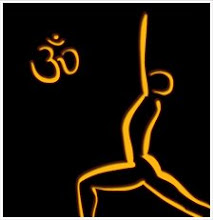
... Firstly, I just want to say that I can understand your concerns. When I first started ashtanga yoga my sciatica was so bad (and running down both legs as far as my ankles) that I could hardly walk without squinting my eyes and clenching my teeth. Funnily enough it was precisly the fact that I had sciatica that I began yoga in the first place: nothing else would work (and I tried EVERYTHING). So, I made a silent pact: if i practice everyday for 6 months and if my sciatica dissappears then I will buy a mat, a rug and every ashtanga book and video in existence! Needless to say it worked and my DVD case and bookshelves are full.
The article you mention has been written many times over the years and is nothing new! The stories of young brahmin boys has been banging around now for decades. Again, nothing new. For me those articles simply do not 'arise' here. When fear bubbles up, articles appear. But, alas, there is no fear here. A dictionary definition of Ashtanga Yoga could actually be 'The Absence of Fear'. But, I will offer a few (likely to be many) words...
This practice has an extremely powerful and healing effect on the body. The entire musculo-skeletal system realigns, re-tunes, and strengthens. Even the essential physiology of the body changes, slowly, over time, along with dietry and lifestyle changes, and drops into a more relaxed, refined and economical state. Old broken pathways are reasserted, past niggles are addressed; even the nervous system is 'cleansed'. The overall essence of dilligent, daily practice goes so much further than basic physical excerise that I can now barely even consider this practice a physical practice at all. To do so, as far as this (my) perception is concerned, is to reduce ashtanga yoga down to a banal one-directional activity. It is practically impossible to convey this without have undergone years of daily practice. It is impossible to describe. But, to set up ashtanaga yoga alongside other physical activities doesn't really warrant the comparison at all. There is nothing that penetrates as deeply as this practice as far as I am aware. The synchronicty of moving the breath, bandhas, drishti and the parts of the body independantly and yet in unicity is unparralled in its intensity and potency.
As such, there is much that comes 'up' and 'out' from this practice.
Soreness? Yes.
Tenderness? Yes.
Strange/new sensations? Yes.
Difficulty? Yes.
Frustration? Yes.
Niggles? Yes.
Pain? Yes
A whole myriad of emotions? Yes!
These ALL subside. Breath is the key. Injury only occurs when breathing stops! So, that is why you will often hear me asking the student who I am adjusting to kindly "breath", as often the student actually holds the breath. Hold the breath for long and what happens to the body?!!
Pain? In my experience, and every other student willing to stick it through the tough times will confirm that, pain arises when a certain weakness is highlighted in the body. This practice is a wonderful highlighter! It is like a magnifying glass and will absolutely tell you if there is something that needs attention. It is like a nagging know-it-all! Often this is met with frustration on the very outset of pain, and sadly people run away in the other direction without realising that walking slowly in the positive direction with breath and fire reveals that the exit is on the way out and only just a few steps away. To put it in Pattabhi terms - pain is either "weakness" (via negative) or "strength coming" (the positive!)
Whichever way you look at it, new life and healing occurs.
Poor adjustments and poor teaching in general can also be an issue. This is a point at which concerns can be understood. Overzealous adjustments from inexperienced or unskillful teachers can be a problem. Same goes for teaching incorrect method. Teaching students to fold forward with a straight back and holding students back on primary series for too long are two extremely cruel endeavours in the ashtanga world and two of the main bugbears that Nancy Gilgoff and myself are working towards eradicating in the ashtanga world. I have accompanied and assisted Nancy throughout the UK and Europe and we see so much of this happening. It is quite rife, and many students are in pain constantly as a result. It is upsetting to see.
Age is absolutely NOT an issue whatsoever. Pattabhi Jois would receive any student whatever the age and condition of the body. He would actually teach people who could not walk. Anyone can do this practice. For modern examples please check out Lino Miele (one of the foremost teachers and practioners) who started in his late 30s (perhaps 40s? fact-finders?)
Lino Miele
Also, check out Gwendoline Hunt who started in her 50s or 60s (!) and kept practicing until her 70s when she sadly died in a drowning accident. She also performed (during her 70s) in one of Lino Miele's instructional videos and displays amazing strength and flexibility. Quite incredible:
Gwendoline Hunt
To say that yoga is not good for someone with back problems is something of an oxymoron. Just a blatant contradiction in terms.
And concerns over the western body-shape? Large strong bodies are ideal for this practice. Kapha is King. Try Derek Ireland:
Derek Ireland
Need I say more?
Actually I didnt need to say anything coz this guy, Eddie Stern, has already done it for me here:
Eddie's clever article

Great post.
ReplyDeleteI showed it to Nancy today and she chuckled.
Then asked me what niggles were.
Pain would be really worth it if we try Yoga.
ReplyDeleteYoga Articles